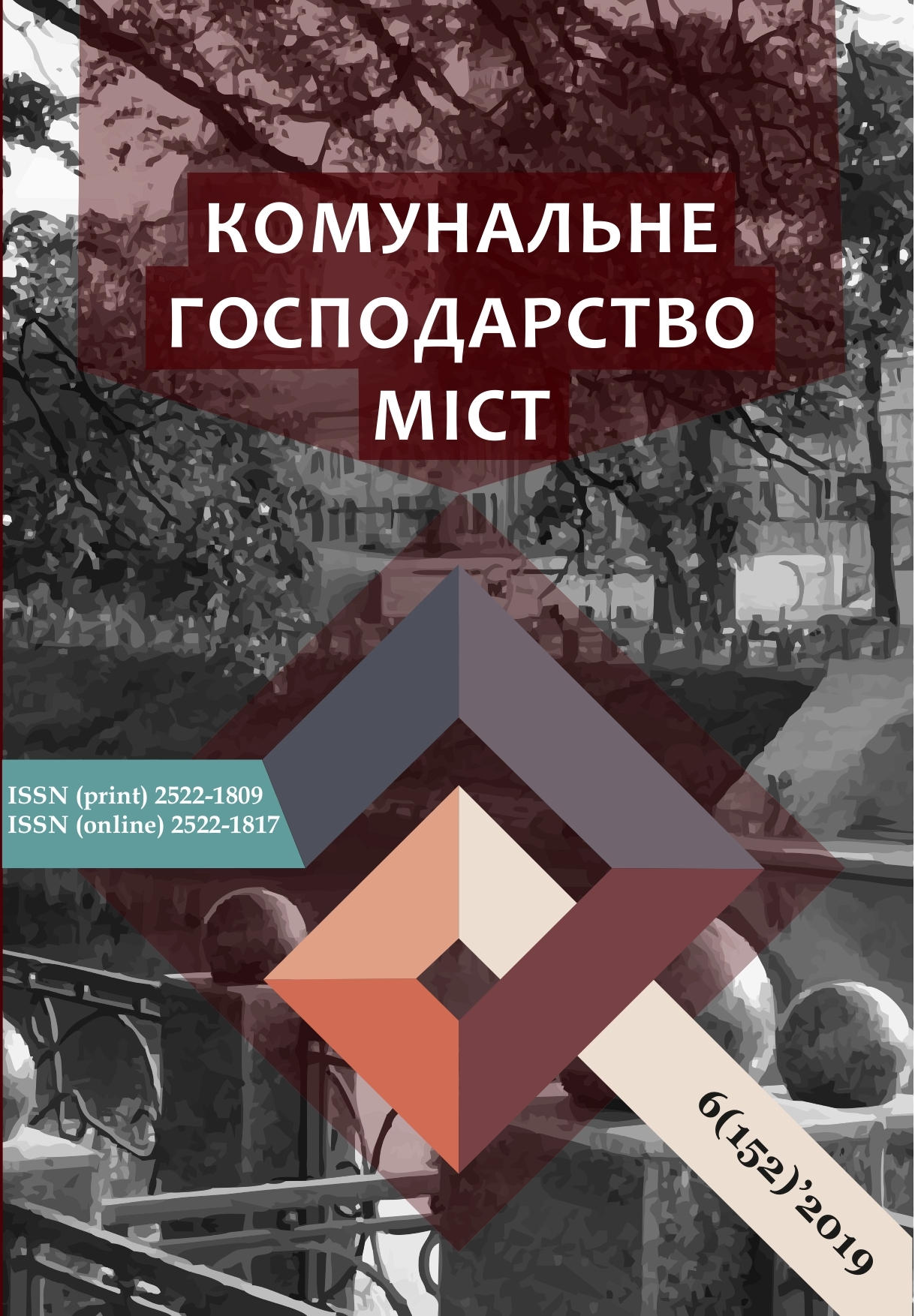METHODOLOGICAL ASPECTS OF INFLUENCE OF INTANGIBLE FACTORS ON THE SPATIAL STRUCTURE OF THE CITY
Array
Keywords:
intangible factors, spatial structure, urban system, city, structural and phenomenological methods.Abstract
The article examines theoretical and methodological aspects of the influence of intangible factors on the spatial structure of the city. It is possible to study the influence of the intangible on the spatial structure of the city by combining a set of methods and principles of scientific knowledge. Given that intangible factors do not have clear quantitative traits, it is advisable to use general scientific methods, including phenomenological ones, to measure them. Applied research methods, in particular structural ones, should be used to determine the extent and extent of the influence of an intangible (which, unlike material factors, is harder to measure quantitatively) on spatial structure. On the basis of structural and phenomenological methods, the levels of influence of the intangible (legislative-regulatory, political-administrative, mental-ethical, religious-spiritual and landscape-aesthetic factors) on the spatial structure of urban systems are determined. The phenomenological approach is based on the ideas of Norwegian architectural historian K. Norberg-Schulz, who proposed the concept of «Genius Loci» to characterize the formal properties of the spatial system, as well as contemporary American architect-practitioner S. Hall, who is an apologist for practical phenomenology in architecture. The structural method is applied on the basis of methodological approaches proposed by the Russian scientist M. Shubenkov. The study found that intangible factors play an important role in the organization of the spatial structure of the city. Intangible provides the possibility of spatial existence of objects, forms a so-called shell of habitation, which can be any object-spatial environment created or adapted by man for his own activity. The creation of a place of life and space around it by man has led to the fact that architecture was formed as a complex artificial system. Historically, it seemed that the cave, as a natural phenomenon, would become an object of architecture only from the moment of its inclusion by man in the space of his residence. Intangible is formed in the spiritual world of people, is a reflection of their artistic preferences, physical and psychological experiences, but exists in the real world and is subject to its natural laws. It is the presence of the intangible and its impact on architecture that makes the latter unique and provides a distinction from the rest of the exact, engineering disciplines, forming a «methodological gap», because understanding the needs of people can not be unified.
References
Vin, A. Fenomenologiya Stivena Kholla. Arkhidom. Retrieved from: http://archidom.ru/content/1170.html.
Habrel, M. M. (2002) Metody ekspertnoi otsinky prostorovoi orhanizatsii mistobudivnykh system. Mistobuduvannia ta terytorialne planuvannia: Nauk.-tekhn. zbirnyk. K.: KNUBA. 11. 14–23.
Lysenko, M. V., Snitko O. S., Bruk V.V. (2019) Vyiavlennia mozhlyvykh napriamkiv udoskonalennia metodyky rozrakhunku indeksu liudskoho rozvytku. Komunalne hospodarstvo mist. Seriia: Tekhnichni nauky ta arkhitektura. Kharkivskyi natsionalnyi universytet miskoho hospodarstva imeni O. M. Beketova. Tom 5. 151. 45-53.
Molodkina, L. V. (2018) Filosofskii smysl arkhitekturnogo proizvedeniya kak mesta. Sotsial'no-gumanitarnoe obozrenie, 3. 27-30. Retrieved from: https://cyberleninka.ru/article/n/filosofskiy-smysl-arhitekturnogo-proizvedeniya-kak-mesta.
Norberg-Shul'ts, K. (1995) Zhizn' imeet mesto. Izvestiya vysshikh uchebnykh zavedenii. Architecton. 1995. № 1-2. – S. 24-31. Perevod s angl. Iovlev V.I. // «Oslo-School of Architecture». Research Magazine. 1991. № 1 // Ed by H. Dunin – Woyseth, Y. Solhein, E. Urheim). 24-26.
Rochniak, Yu.A. Arkhitekturnyi prostir i arkhitekturne seredovyshche: poshuk vidpovidei. Retrieved from: http://ena.lp.edu.ua:8080/bitstream /ntb/36747/1/14_84-87.pdf.
Shubenkov, M. V. (2007) Struktura arkhitekturnogo prostranstva. Arkhitektura i stroitel'stvo Rossii. №1. 2-8. Retrieved from: https://elibrary.ru/item.asp?id=11897835.
Eremia, М., Toma, L., Sanduleac, M. (2017) The Smart City Concept in the 21st Century. Procedia Engineering, 181, 12-19. Retrieved from: https://doi.org/10.1016/j.proeng. 2017.02.357.
Holl,, S. (2000) Parallax. New York : Princeton Architectural Press. 353.
Joss, S., Sengers, F., Schraven, D., Caprotti, F., Dayot, Y. (2019) The Smart City as Global Discourse: Storylines and Critical Junctures across 27 Cities. Journal of Urban Technology, Volume 26. Retrieved from: https://doi.org/10.1080/10630732.2018.1558387.
Norberg-Schulz, C. (1980) Genius Loci: Towards a Phenomenology of Architecture. New York : Rizzoli. 213.
Norberg-Schulz, C. (1963) Intentions in Architecture. Oslo : Universitetsforlaget, 1963.
Downloads
Published
How to Cite
Issue
Section
License
The authors who publish in this collection agree with the following terms:
• The authors reserve the right to authorship of their work and give the magazine the right to first publish this work under the terms of license CC BY-NC-ND 4.0 (with the Designation of Authorship - Non-Commercial - Without Derivatives 4.0 International), which allows others to freely distribute the published work with a mandatory reference to the authors of the original work and the first publication of the work in this magazine.
• Authors have the right to make independent extra-exclusive work agreements in the form in which they were published by this magazine (for example, posting work in an electronic repository of an institution or publishing as part of a monograph), provided that the link to the first publication of the work in this journal is maintained. .
• Journal policy allows and encourages the publication of manuscripts on the Internet (for example, in institutions' repositories or on personal websites), both before the publication of this manuscript and during its editorial work, as it contributes to the emergence of productive scientific discussion and positively affects the efficiency and dynamics of the citation of the published work (see The Effect of Open Access).

